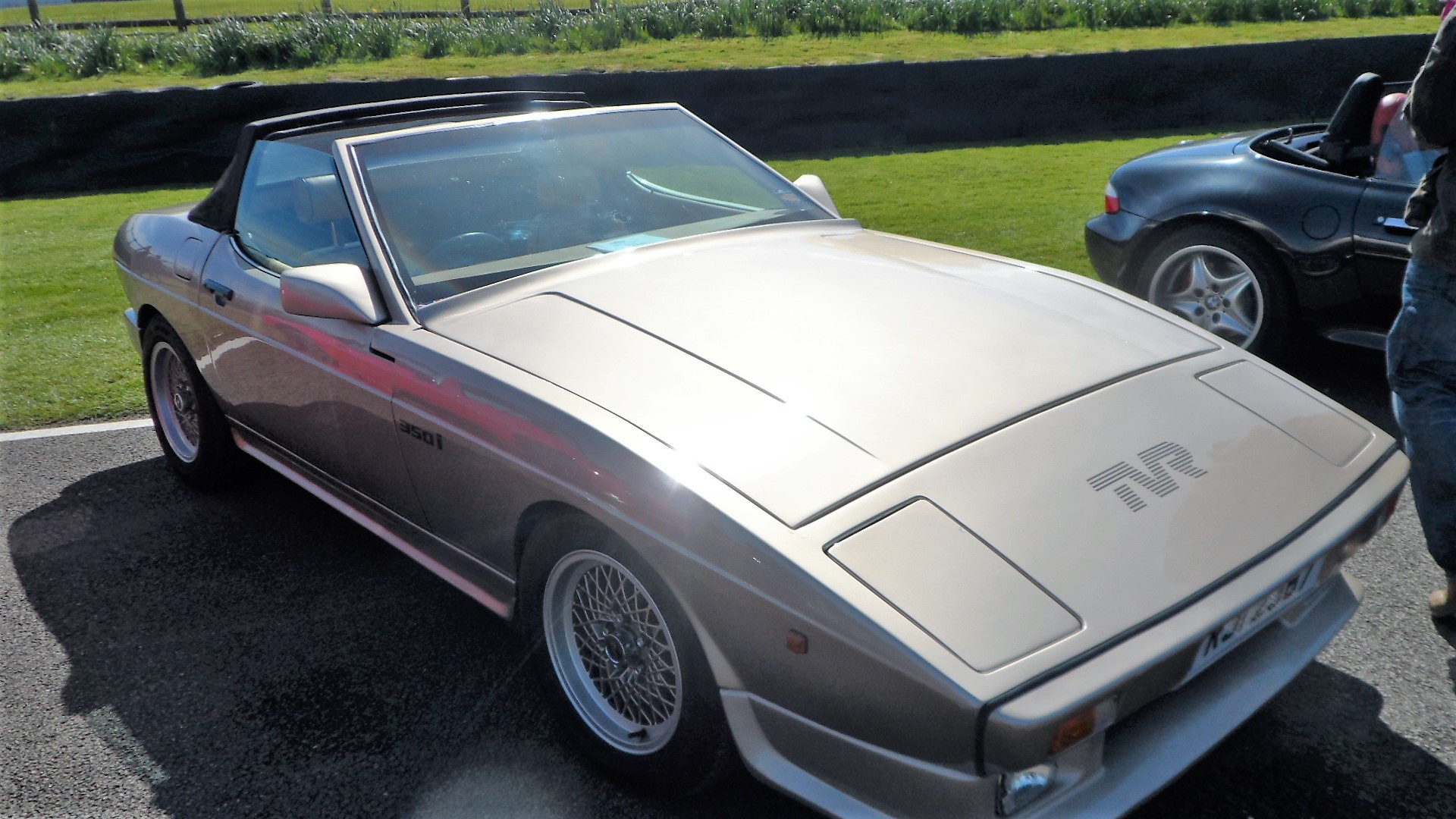-
Insurance
InsuranceAbout our productsLearn about insuringGet a quote Get current values, historical values, model history and more.
-
Valuation
ValuationHagerty valuation toolLook up a vehicle value Get current values, historical values, model history and more.
-
Events
EventsHagerty official eventsHagerty ClubhouseEvent calendar
-
Entertainment
EntertainmentMore to explore
- Portal login
1990 TVR 350SE
Base Convertible 3.9 L
Vehicle values by condition
Fair
Condition 4
£6,700
#4 cars are daily drivers, with flaws visible to the naked eye. The chrome might have pitting or scratches, the windshield might be chipped.
Good
Condition 3
£9,500
#3 cars could possess some, but not all of the issues of a #4 car, but they will be balanced by other factors such as a fresh paint job or a new, correct interior.
Excellent
Condition 2
£11,100
#2 cars could win a local or regional show. They can be former #1 cars that have been driven or have aged. Seasoned observers will have to look closely for flaws.
Concours
Condition 1
£13,400
#1 vehicles are the best in the world. The visual image is of the best car, unmodified, in the right colours, driving onto the lawn at the finest concours.
Insurance premium for a
1990 TVR 350SE Base Convertible 3905
valued at £9,500
£247.92
/ year*
History of the 1990 - 1991 TVR 350SE

1990 - 1991 TVR 350SE
TVR Wedge V8s (Coupe/Convertible), 1983-1991
The TVR Wedge was in production from 1983 until 1991, if we include the first few Tasmin 350is as Wedge models. Styled in house by Oliver Winterbottom, it is a front-engine, rear wheel drive GT range seating two adults and sometimes two children.
Starting with the 350i, the range expanded through the 1980s until it incorporated 390, 400, 420 and 450 models - to say nothing of SX supercharged varieties and the aerodynamic, lightweight SEAC. Only a handful of early 350s wore coupe bodies, the rest were all two seat convertibles and all enjoyed a reputation for biting the uninitiated should you attempt to take liberties with them. Based on the Tasmin 280i, the fitment of the Rover V8 had originally been a means of selling the cars in Arab states, where there was resistance to Ford products (such as the Cologne) because of Ford's interaction with Israel. The fact that the cars offered more power than the 280i - something new boss Peter Wheeler wanted, as he felt that the 280i was lacking in thrill factor - was a happy bonus.
While an in depth analysis of the range would take hours, it can be rationalised as follows: the three numbers are an indicator as to the engine size of the car in question - for instance a 390 is a 3.9 litre, while a 420 is a 4.2 litre. SE is the standard specification from 3.9 litres upwards, with the exception of the last-of-line 350SE special edition. SX denotes the fitment of a supercharger, developed by the Northern TVR Centre in Barrow in Furness and using a Sprintex supercharger. 420SEAC models use an Aramid composite body made of GRP and Kevlar, along with a more aerodynamic nose - something revised for later 420SEACs and all 450SEACs owing to quality problems, where they kept the aerodynamic nose but reverted to GRP shells. Wedge models were replaced by the Griffith in 1990, though the last of the Wedges were sold into 1991.
The Griffith is arguably the best alternative to a Wedge today - though for softer, smaller engined Wedges we'd advise the longer wheelbase Chimaera instead. Alternative, a Tasmin 280i offers the same style with less power, or a 3000M/Taimar fitted with a turbo could arguably represent the potent starting point from which the Wedges developed.
Hagerty Newsletter
Get your weekly dose of car news from Hagerty UK in your inbox

ADVERTISEMENT